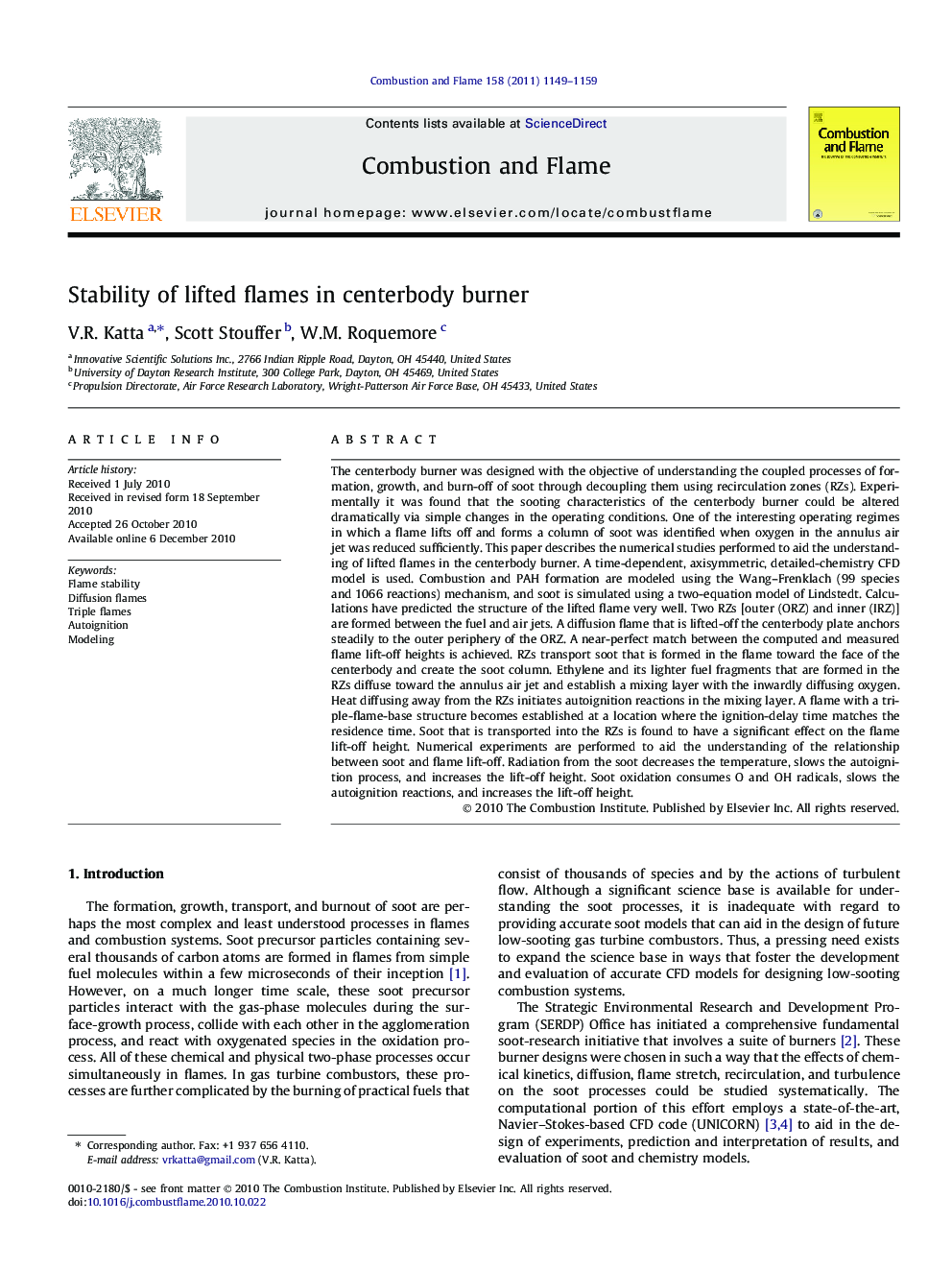| کد مقاله | کد نشریه | سال انتشار | مقاله انگلیسی | نسخه تمام متن |
|---|---|---|---|---|
| 169871 | 458051 | 2011 | 11 صفحه PDF | دانلود رایگان |

The centerbody burner was designed with the objective of understanding the coupled processes of formation, growth, and burn-off of soot through decoupling them using recirculation zones (RZs). Experimentally it was found that the sooting characteristics of the centerbody burner could be altered dramatically via simple changes in the operating conditions. One of the interesting operating regimes in which a flame lifts off and forms a column of soot was identified when oxygen in the annulus air jet was reduced sufficiently. This paper describes the numerical studies performed to aid the understanding of lifted flames in the centerbody burner. A time-dependent, axisymmetric, detailed-chemistry CFD model is used. Combustion and PAH formation are modeled using the Wang–Frenklach (99 species and 1066 reactions) mechanism, and soot is simulated using a two-equation model of Lindstedt. Calculations have predicted the structure of the lifted flame very well. Two RZs [outer (ORZ) and inner (IRZ)] are formed between the fuel and air jets. A diffusion flame that is lifted-off the centerbody plate anchors steadily to the outer periphery of the ORZ. A near-perfect match between the computed and measured flame lift-off heights is achieved. RZs transport soot that is formed in the flame toward the face of the centerbody and create the soot column. Ethylene and its lighter fuel fragments that are formed in the RZs diffuse toward the annulus air jet and establish a mixing layer with the inwardly diffusing oxygen. Heat diffusing away from the RZs initiates autoignition reactions in the mixing layer. A flame with a triple-flame-base structure becomes established at a location where the ignition-delay time matches the residence time. Soot that is transported into the RZs is found to have a significant effect on the flame lift-off height. Numerical experiments are performed to aid the understanding of the relationship between soot and flame lift-off. Radiation from the soot decreases the temperature, slows the autoignition process, and increases the lift-off height. Soot oxidation consumes O and OH radicals, slows the autoignition reactions, and increases the lift-off height.
Journal: Combustion and Flame - Volume 158, Issue 6, June 2011, Pages 1149–1159